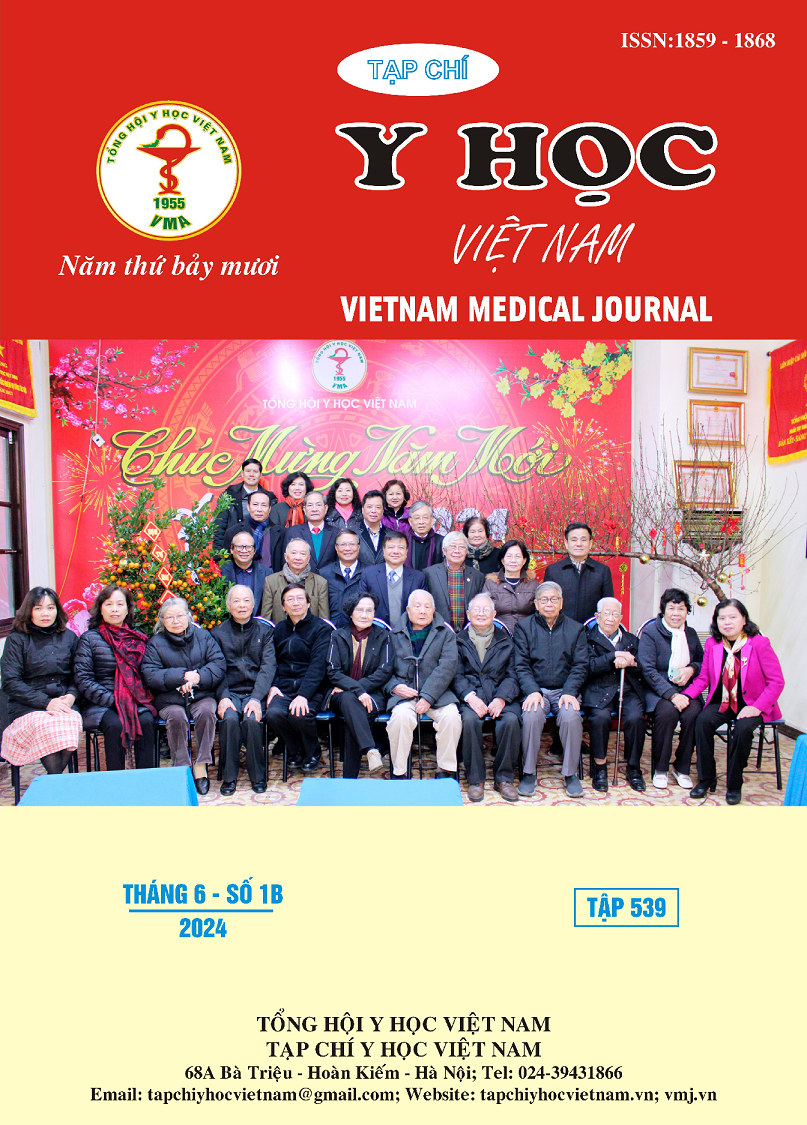NGHIÊN CỨU KẾT QUẢ CAN THIỆP ĐỘNG MẠCH VÀNH QUA DA BẰNG ĐƯỜNG VÀO ĐOẠN XA ĐỘNG MẠCH QUAY Ở BỆNH NHÂN HỘI CHỨNG ĐỘNG MẠCH VÀNH MẠN TẠI BỆNH VIỆN ĐA KHOA TRUNG ƯƠNG CẦN THƠ
Nội dung chính của bài viết
Tóm tắt
Đặt vấn đề: Hội chứng động mạch vành mạn có tỷ lệ tử vong và các biến cố tim mạch cao, phương pháp can thiệp động mạch vành sử dụng đường vào đoạn xa đoạn mạch quay cho kết quả không thua kém so với đường động mạch quay truyền thống, trong khi biến chứng toàn thân và tại chỗ thấp. Tuy nhiên, tại Việt Nam chưa có nhiều nghiên cứu đánh giá kết quả điều trị bằng phương pháp này trên nhóm bệnh nhân hội chứng động mạch vành mạn. Mục tiêu: Đánh giá đặc điểm kỹ thuật và kết quả điều trị hội chứng động mạch vành mạn sử dụng phương pháp can thiệp động mạch vành qua da bằng đường vào đoạn xa động mạch quay. Đối tượng và phương pháp nghiên cứu: Nghiên cứu can thiệp, chọn mẫu thuận tiện trên bệnh nhân nội trú được chẩn đoán hội chứng động mạch vành mạn có chỉ định chụp và can thiệp động mạch vành qua da tại Khoa Tim mạch can thiệp - Bệnh viện Đa khoa Trung ương Cần Thơ từ tháng 3 năm 2023 đến tháng 3 năm 2024. Kết quả: Kết thúc theo dõi ghi nhận độ tuổi trung bình giữa hai nhóm lần lượt là 65,8 ± 10,2 tuổi (ĐXĐMQ, n=30) và 65,3 ± 9,0 tuổi (ĐMQ, n=30), nam giới chiếm đa số với tỷ lệ lần lượt là 53,3% và 63,3%. Vị trí tổn thương thường gặp nhất ở cả hai nhóm là LAD, đa phần là tổn thương 1 nhánh động mạch vành. Tổng chiều dài stent ở nhóm ĐXĐMQ thấp hơn so với nhóm ĐMQ với 9,3 ± 3,9mm so với 11,5 ± 1,9mm (p<0,05). Thời gian đau sau can thiệp và thời gian băng ép ở nhóm can thiệp qua ĐMQ cao hơn so với nhóm ĐXĐMQ (p<0,01). 100% bệnh nhân ở cả hai nhóm được can thiệp thành công với dòng chảy TIMI III đạt được ở toàn bộ bệnh nhân sau can thiệp. nhóm can thiệp ĐMQ có 2 bệnh nhân suy thận cấp do thuốc cản quang. Tắc động mạch quay, tụ máu tại vị trí đâm kim và tê bì bàn tay sau can thiệp ở nhóm ĐXĐMQ lần lượt là 3,3%; 3,3% và 6,7% so với 3,3%; 6,6% và 23,3% ở nhóm ĐMQ. Kết luận: Phương pháp can thiệp động mạch vành qua da bằng đường vào đoạn xa động mạch quay ở bệnh nhân hội chứng động mạch vành mạn cho kết quả thành cao công với tỷ lệ các biến chứng toàn thân và biến chứng tại chỗ thấp hơn so với can thiệp qua động mạch quay truyền thống.
Chi tiết bài viết
Từ khóa
hội chứng động mạch vành mạn, chụp và can thiệp mạch vành, đoạn xa động mạch quay
Tài liệu tham khảo
2. Nguyễn Khắc Linh (2022). Kết quả sử dụng đường vào đoạn xa động mạch quay trong chụp và can thiệp động mạch vành, Tạp chí tim mạch học Việt Nam, số 100, tr. 67-73.
3. Võ Thành Nhân (2023). Tính khả thi của cách tiếp cận qua đoạn xa động mạch quay trái trong chụp và can thiệp mạch vành, Tạp chí Y học Việt Nam, tập 524, số 1B, tr. 361-365.
4. Aminian A, Sgueglia G A, Wiemer M, Kefer J et al (2022). Distal versus conventional radial access for coronary angiography and intervention: the DISCO RADIAL trial, Cardiovascular Interventions, 15 (12), pp. 1191-1201.
5. Corcos T (2019). Distal radial access for coronary angiography and percutaneous coronary intervention: a state‐of‐the‐art review, Catheterization and Cardiovascular Interventions, 93 (4), pp. 639-644.
6. Ilie A C, Taranu S M, Stefaniu R, Sandu I A, et al (2022). Chronic Coronary Syndrome in Frail Old Population, Life, 12 (8), pp. 1133.
7. Knuuti J, Wijns W, Saraste A, Capodanno D, et al (2020). 2019 ESC Guidelines for the diagnosis and management of chronic coronary syndromes: the Task Force for the diagnosis and management of chronic coronary syndromes of the European Society of Cardiology (ESC), European heart journal, 41 (3), pp. 407-477.
8. Xie L, Wei X, Xie Z, Jia S, et al (2021). Feasibility of distal radial access for coronary angiography and percutaneous coronary intervention: a single center experience, Cardiology, 146 (5), pp. 531-537.


